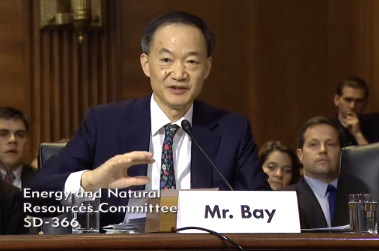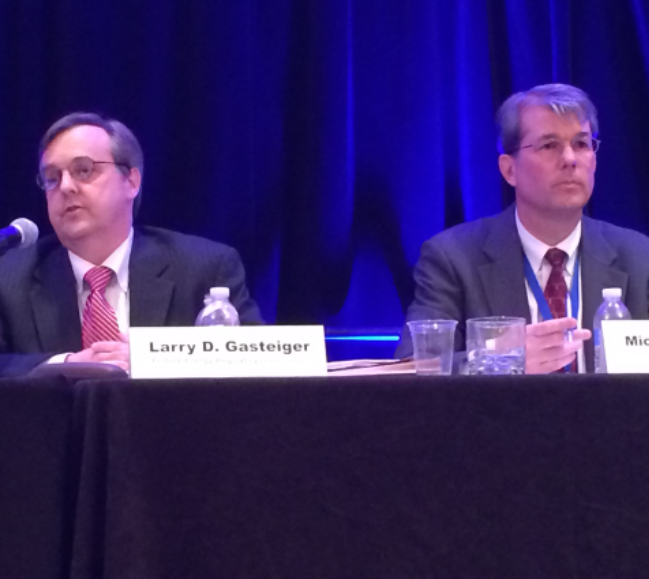PJM received 106 proposals to fix about 50 reliability problems in the first Regional Transmission Expansion Plan window for 2014.
Fifteen companies made proposals in the window that closed July 28. PPL was the most ambitious, offering 16 projects totaling almost $3 billion.
It was the first full-scale reliability window opened by PJM under the Federal Energy Regulatory Commission’s Order 1000. Last year, PJM opened a window for a single reliability problem at Artificial Island and one for “market efficiency” proposals intended to reduce congestion.
The PPL projects include the reliability portion of a 725-mile, 500-kV transmission line that would run from Western Pennsylvania into New York and New Jersey, with a spur running south into Maryland, at an estimated cost of $4 billion to $6 billion. PPL said the line would address reliability problems on three 230-kV lines, as well as relieve congestion and move power from planned generators fueled by shale gas in northern Pennsylvania.
Four other companies – Public Service Enterprise Group, Transource Energy, ITC Holdings and LS Power’s Northeast Transmission Development – each proposed projects totaling more than $500 million.
They include 61 greenfield projects (total $5.7 billion) and 45 transmission owner upgrades totaling $522 million. Targeted were 18 transmission zones in 10 states, with Atlantic City Electric (AE), PPL, American Electric Power and American Transmission Systems Inc. each attracting 10 or more proposals.
The proposals are intended to address reliability violations that would occur through 2019. Some problems may be moot by that time, however, according to Paul McGlynn, general manager of system planning. Some violations in the AEP transmission zone, for example, will be eliminated by the planned retirement of AEP’s Tanners Creek generators, scheduled for mid-2015.
“We may not act on [all of] these issues,” McGlynn said. “There’s a lot of failings that won’t actually be problems.”
Conversely, problems identified in the AE zone because of capacity injection rights for the BL England generator may not manifest if the plant retires and is not replaced, planners said.
PJM plans to open a “long-term” window in November for market efficiency and reliability proposals addressing problems over a 15-year horizon.
Artificial Island Update
Meanwhile, McGlynn told the Transmission Expansion Advisory Committee that PJM will be sending Artificial Island project finalists Public Service Electric & Gas, Dominion Resources and Transource letters next week asking them whether they will join finalist LS Power in agreeing to cap the costs of their proposals.
PJM announced July 23 that the Board of Managers had delayed action on planners’ recommendation that it select PSE&G to construct the project. (See PJM Board Puts the Brakes on Artificial Island Selection.)
McGlynn said the finalists would have no more than two weeks to respond and that PJM is still planning to make a selection by year’s end. “The answers we get back from the finalists may lead to more questions,” he said, promising an “open and transparent” process for comparing any revised proposals.
Planners told the TEAC they had discovered an error in the cost allocation they announced in May for certain 500-kV proposals, including PSE&G’s. (See Delaware Unhappy with Artificial Island Cost Allocation.)
The allocation was split 50/50 based on load-ratio share and a distribution factor (DFAX) analysis. Planners said the original DFAX analysis assumed flows for a new 500-kV line between Artificial Island in New Jersey and Red Lion, Del., would be predominantly west to east when they are actually the reverse.
Although revised calculations have not been completed, planners said they expect allocations for transmission zones west of Artificial Island to increase.
The original allocation would have assigned costs to among two dozen transmission zones and merchants with the Jersey Central Power & Light zone responsible for about 27% of the project and the AE zone picking up almost 20%.
The error did not affect the cost allocation for LS Power’s proposed 230-kV line between Artificial Island and Cedar Creek, Del., all of which would be allocated to the Delmarva Power & Light zone, according to PJM.



















